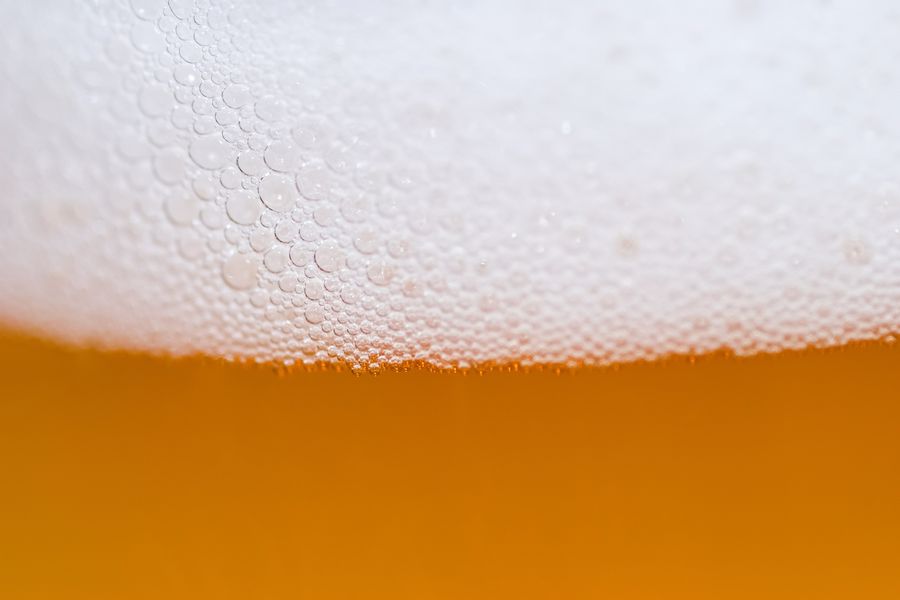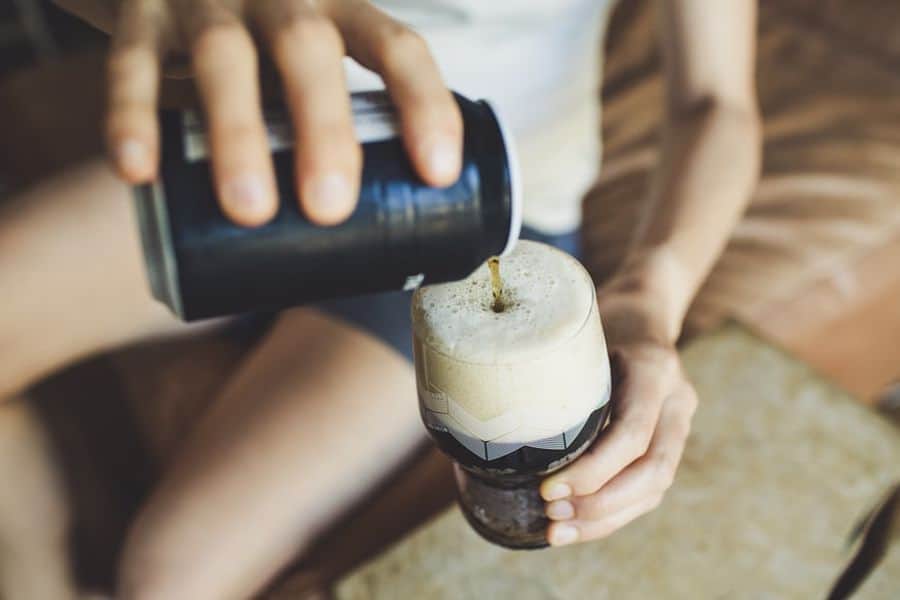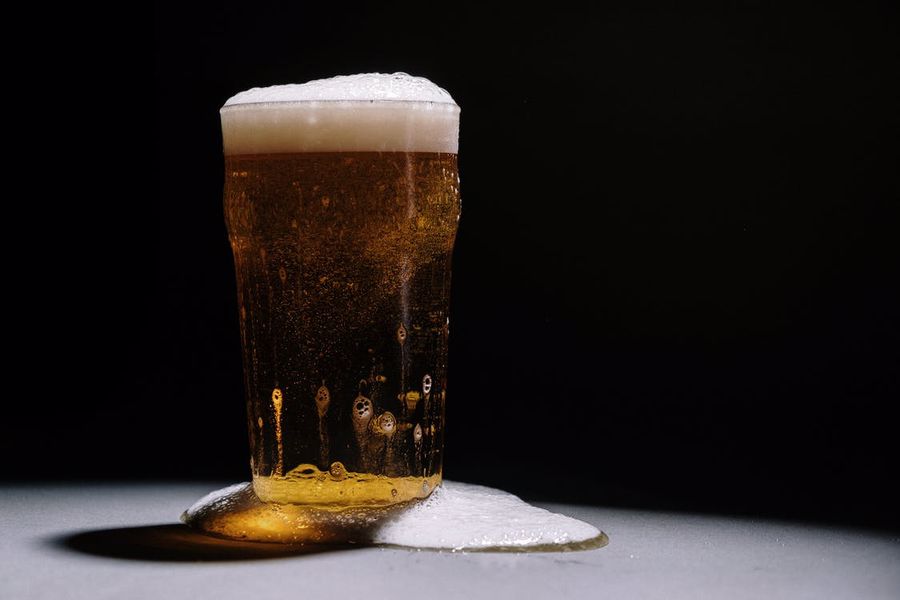If you buy something through a link in our posts, we may get a small share of the sale.
After spending many hours brewing your favorite beer, you might accidentally pump in too much carbon dioxide. The resulting over carbonated beer will be too sharp on the tongue due to the altered flavor. Luckily, this article will guide you on how to fix over carbonated beer.
Contents
- How to Fix Over Carbonated Beer
- How Is Beer Over Carbonated?
- What Causes Beer to Be Over Carbonated?
- How to Fix Over Carbonation in Beer
- Ways of Preventing Over Carbonated Bottled Beer
- How Do You Know That Fermentation Is Complete?
- How to Correctly Measure the Priming Sugar When Bottling
- How Do You Know That Your Beer Is Carbonated?
- Final Thoughts
How to Fix Over Carbonated Beer
Beer becomes over carbonated when there is excessive priming sugar during the bottling process. It can also occur if you bottle the beer before it has finished fermenting.

You can use a hydrometer to measure the priming sugar to ensure the fermentation process is complete to avoid over carbonated beer.
How Is Beer Over Carbonated?
Carbonation refers to the process of pumping carbon dioxide into a beer. Below are two different methods you can use to carbonate beer.
Bottle Conditioning
This beer carbonation method involves the addition of extra sugar during the beer bottling time. In most cases, dextrose is added, and the yeast that remains in the beer consumes it to generate carbon dioxide.
Keeping in mind that the bottle has already been sealed, the generated carbon dioxide has nowhere to escape, so it is dissolved into the beer.
Keg Carbonation
You can only use this method if you have a keg setup. This method involves using a carbon dioxide canister to pump the CO2 gas into the kegged beer. Although the above methods differ, there are chances of over carbonation in either method.
What Causes Beer to Be Over Carbonated?
Over carbonated beer is something you can avoid if you are careful. In most cases, over carbonation happens due to accidentally setting the carbon dioxide regulator high or wrong measurement of the corn sugar.
Although rare, an infection can also cause beer over carbonation. The taste of the beer can help you tell whether the over carbonation is due to excess sugar or excessive carbon dioxide. If the over carbonation results from an infection, you can use a sanitizer to prevent it.
How Keg Becomes Over Carbonated?
The leading cause of over carbonation in a keg is setting the carbon dioxide tank regulator too high. This can be the case if you set the carbon dioxide tank regulator at around 30-45 PSI and maintain that pressure the whole night.
Unlike when using the slow and steady option, this quick method of forcing carbon dioxide into the beer can easily result in over carbonation. If you want to force the carb into a keg, it is advisable to leave it overnight at a pressure of 25 PSI and then reduce it to about 10-14 PSI.
It might take you several days during the initial carbonation to do it this way, but you will have avoided the risk of over carbonation. Keep in mind the beer cannot be drunk in about 2 to 3 days if you carbonate it this way.
How Over Carbonation Happens in a Bottle?
If you have bottled your beer and then the bottles begin to explode, or the beer gushes out when you open the bottles, it shows there is an over carbonation problem. Here are some reasons that might lead to over carbonation in a bottle:

- Excessive Addition of Priming Sugar: If you’re not careful when adding the priming sugar or something is wrong with your priming sugar calculator, you might get the measurements wrong. Although the correct measurements for your specific carbonation levels depend on your brewing style, you can use the priming sugar calculator to determine what works in most cases.
- Failure to Adequately Mix the Priming Sugar: You might be siphoning the beer from the fermenting equipment to the bottling vessel before putting it into bottles. It is advisable to put the priming sugar into the bottling vessel to mix when siphoning.
- Incomplete Beer Fermentation: Over carbonation can happen if you rush things and don’t give the yeast adequate time to attenuate fully. The remaining yeast will continue consuming the leftover priming sugars to generate carbon dioxide, resulting in over carbonation.
How to Fix Over Carbonation in Beer
If you have accidentally over-carbonated your beer, there are some steps you can undertake to reduce the carbonation level. Here are some ways to fix over-carbonated beer in a keg and a bottle.
How to Reduce Over Carbonation in Keg
There are some different methods you can use to reduce over carbonation in a keg setup. Fortunately, corny kegs come with a pressure rating of 130 PSI, which poses minimal safety risks. Here is how to do it in a keg setup
Purge the Headspace and Then Shake the Keg
The first step is to detach the gas line from the keg and release the excessive pressure from your keg by pressing the pressure release valve. If your keg doesn’t have a pressure release valve, you can use a screwdriver to press the poppit on the “gain in” part.
Once the pressure is released, gently shake the keg several times. The shaking agitates the beer, making it release the dissolved carbon dioxide gas. After shaking the keg about five to six times, pull the pressure release valve again to release the pressure that might have built up.
After repeating this procedure several times, let the keg rest in the kegerator untouched for several hours. Remember not to attach the gas line during this time. After this period, reconnect the gas line with the carb.
Check Your Keg Setup
Excessive foam is not produced as a result of over carbonation. The keg lines don’t have the optimal length and will cause your pour to become foamy. Beer lines usually require a specific length of about 8 feet and 3/16″ tubing to minimize foaming.
Besides beer lines length, occasionally, a couple of PSI differences in gas pressure makes a big difference. The outgoing pressure for dispensing beer in a CO2 tank should be set at about 10 PSI.
Any pressure set above that causes the initial third of the glass to be foamy. Fixing an over-carbonated keg is very easy, but fixing in bottles can be quite challenging.
How to Reduce Over Carbonation in a Bottle
The most challenging part is that probably you will not be able to know that a bottle is over carbonated until it gushes everywhere once you pop the cap or explode on you.
However, there is a likelihood that the whole batch is over carbonated if one bottle does this. Use the following methods if you want to fix an over-carbonated bottle.

- Make It Super Cold: This method does not minimize the carbonation but prevents a volcano eruption when you pop the bottle open. After opening, beer near or freezing temperature foams less, letting you pour much of it in a glass. You should then allow it to degas as it gains a serving temperature.
- Give Your Beer Maximum Time: You should allow your beer to remain in the refrigerator for some time after carbonation to prevent over carbonation. Usually, the yeast goes dormant at fridge temperatures, so allowing your beer to remain in the fridge prevents excessive carbonation.
- Re-Cap Bottles: Even though this is the most time-consuming procedure, it is the only valid method of fixing over carbonated bottles. Place the bottles in the fridge overnight as this minimizes the foaming when you pop them open. When you open every bottle, ensure you cover each with sanitized tin foil and let them remain open for about 1 to 4 hours, and the beer will start to degas naturally. After this period, recap all of them in new bottle caps. You should not attempt saving a few bucks and reuse the older ones.
- Re-Seat the Bottle: This method is very risky because you do not reseat the bottle’s cap into a perfect and new seal. If need be, you can open the bottle cap allowing the CO2 from inside the headspace to escape the bottle.
Ways of Preventing Over Carbonated Bottled Beer
Too much sugar is available for yeast conversion into carbon dioxide, and ethanol results in over carbonation in your beer.
Being cautious about the amount of sugar in your beer after bottling helps prevent future over carbonation regardless of whether the sugar is priming sugar or the excess sugar from fermentation.
Also, knowing the amount of time the yeast left will carbonate the beer is crucial. Practicing and experiencing correct measuring of the three factors involved in carbonation: time, sugar, and yeast ensure perfect carbonated bottles each time.
How Do You Know That Fermentation Is Complete?
Even though getting excited about new homebrew is expected, avoid going ahead and bottling before fermentation is finished. When you bottle the beer too soon, the excess sugar ferment in the bottle and changes the recipe.
You must be cautious even if fermentation slows down. This is because yeast breaks down different sugars at different rates, and before your malt extraction, your sucrose will be fully fermented. Below are ways to know that fermentation is complete:
- Measure the Beer’s Gravity Using a Hydrometer: This is the most straightforward way of consistently tracking the fermentation procedure. You must include the final gravity readings in your recipe, so you have to use your hygrometer to improve the consistency and accuracy of your brews.
- Check the Physical Changes: You can check to see any indications that your yeast has completed sugar conversion to carbon dioxide. This is if you forgot to take the first reading or you don’t have a hygrometer.

How to Correctly Measure the Priming Sugar When Bottling
Even though measuring ingredients looks like a straightforward procedure, there are things that you should consider. If you’re following a specific recipe, it is crucial to take measurements of your ingredients by weight and not by volume.
If you are given a choice, you must always use your scale instead of your measuring cups. Measuring by weight allows accounting for any differences in the method of sugar processing, maintaining accuracy even if you scale up your recipe.
For these reasons, professional breweries prefer measuring by weight. Suppose you lack a recipe, or it only offers you a measurement of volumetric priming sugar. In that case, you can use a calculator to know precisely the amount of sugar required for different styles of beer and priming sugars.
How Do You Know That Your Beer Is Carbonated?
If you follow your recipe to the letter, knowing when your beer is correctly carbonated is easy. You should follow what your recipe recommends as the ideal time to produce carbonation is 2 to 3 weeks. Consider following the below ways when tracking down the carbonation levels:
- Sediment: Carbonation is a short round of fermentation. Look for any sediment accumulating at the bottom of the bottles to help you know the progress of the yeast.
- Carbonation: By turning your bottle, find out if any tiny carbonation bubbles rise the side of the glass.
- The Raisin Trick: Suppose you are worried about the sugar levels and want an indication that it is now the best time to fridge your beer before it over carbonates; put a raisin in one of the bottles. The raisin rises to the top once the bottle carbonates.
Final Thoughts
Nothing is frustrating to homebrewers like an over-carbonated beer. It might be due to an incomplete fermentation process, or you have added too much priming sugar.
Whichever the cause, excessive CO2 can lead to too much foam, which might ruin the beer or even makes a bottled beer explode. If your beer is over-carbonated, follow the above tips on fixing over carbonated beer, and you will prevent the awful over carbonation results.

